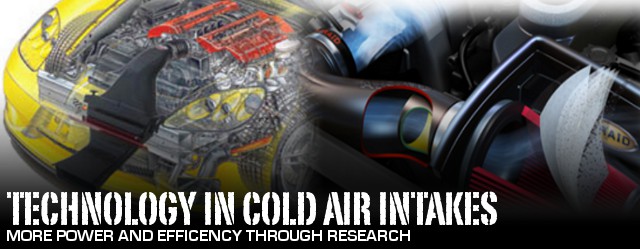 The LS family of GM V-8 engines has been a phenomenal success since its introduction in the mid-1990s. When first introduced, enthusiasts didn’t have high expectations, coming off of the LT1 V8 architecture with its quirks and only minor improvements over the traditional small block Chevy. The Gen III engines started life looking like nothing more than a warmed over pushrod design when the competition was rolling out overhead cam V8’s across the board.
The LS family of GM V-8 engines has been a phenomenal success since its introduction in the mid-1990s. When first introduced, enthusiasts didn’t have high expectations, coming off of the LT1 V8 architecture with its quirks and only minor improvements over the traditional small block Chevy. The Gen III engines started life looking like nothing more than a warmed over pushrod design when the competition was rolling out overhead cam V8’s across the board.
In truth, the LS was way better and here’s why. The all-new LS was a clean sheet of paper V8 engine employing the best technology ever seen in an American pushrod V-8. You could easily call the LS the perfect V8 thanks to the way GM designed this engine with its skirted cross-bolted block, free-breathing straight-shot heads, and its compact size. What’s more, the LS has only gotten better in the years since, and has found a home in a huge variety of GM car and truck lines.
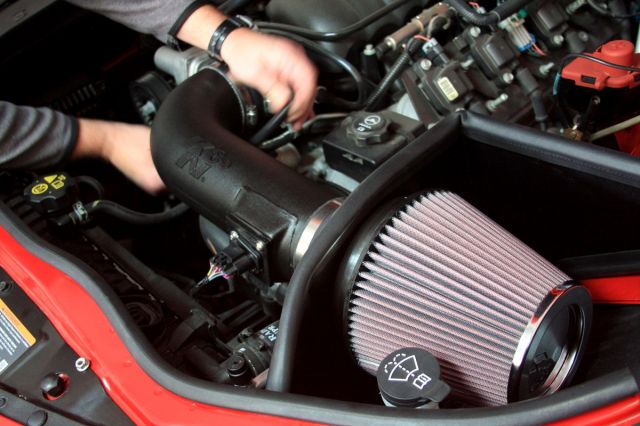
Cold air intakes have earned a reputation for being one of the best bang-for-your-buck modifications you can make to a modern V8, and for good reason. They are simple on the surface, but you might be surprised at just how much engineering and testing goes into each specific system.
The LS series V8 has enjoyed a wealth of different aftermarket parts support since its introduction approaching two decades ago, with more and more becoming available as this engine evolves. There have been heads, induction, cams, throttle bodies, and a host of other power enhancers for a wide variety of LS applications. However, a cold air intake is almost universally the first modifications that LS enthusiasts perform, and with good reason. Cold air intakes are relatively inexpensive, easy to install, and can reap some very respectable power gains.
Unfortunately, there’s a lot of choices out there, and depending on your particular car’s popularity, you may be faced with a half dozen or more different cold air induction systems to pick from, with some manufacturers offering multiple options within their own product line. How do you decide what’s right for your car or truck? It all comes down to doing your homework…
Intakes may all be meant to do the same thing - flow more air - but designs, technology, and testing can vary widely between manufacturers.
First, A Baseline Test
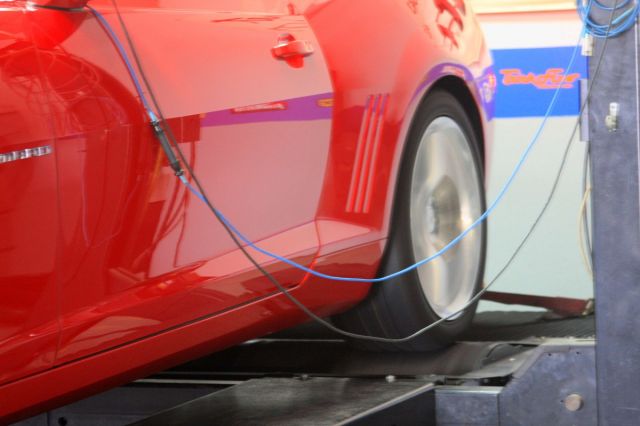 Before you make any changes, invest in a good baseline dyno test and tune by a proven professional to see what your engine is doing in box stock condition and so you can verify your own power gains as you pursue power. It’s always a wise process to head back to the dyno for a test and tune with each upgrade. Not only will you be able to clearly chart your progress from the beginning, with a little tweaking of air/fuel and spark timing by a dyno tuning professional, you’ll also see improvements that aid performance and improve driveability.
Before you make any changes, invest in a good baseline dyno test and tune by a proven professional to see what your engine is doing in box stock condition and so you can verify your own power gains as you pursue power. It’s always a wise process to head back to the dyno for a test and tune with each upgrade. Not only will you be able to clearly chart your progress from the beginning, with a little tweaking of air/fuel and spark timing by a dyno tuning professional, you’ll also see improvements that aid performance and improve driveability.
The main thing to remember about dyno numbers is ambient temperature, humidity levels, barometric pressure, and a host of other variables can alter the results of dyno testing. While most manufacturers strive to provide realistic and repeatable claims when it comes to improvements in horsepower and torque, differences in the dynos used, the individual test vehicles, and even whether it was done during summer or winter will all affect the results. As they say, “your mileage may vary,” and while advertised numbers are usually trustworthy, don’t use them as the sole means of comparison.
Cold Air = Power Gains
Cold air induction is as old a concept as the internal combustion engine itself. It’s that basic physics we were taught in high school – cold air is denser, and denser air means more fuel can be burned. This is where heat energy manifests itself into mechanical motion and power. The more heat energy we can harness above the piston, the more power we’re going to make.
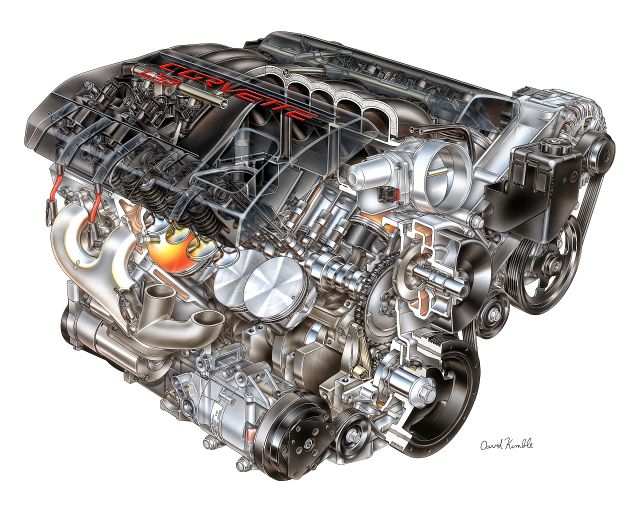
GM’s revolutionary LS family of V8 engines have been around for approaching two decades, and still have plenty of life in them even with the advent of the new Gen V LT1. Because these engines are so easy to get power from, begin with a heaping, helping dose of cold air via a good aftermarket system. Though you’re probably not going to see much more than 10-15 horsepower, each and every improvement like this means power gains.
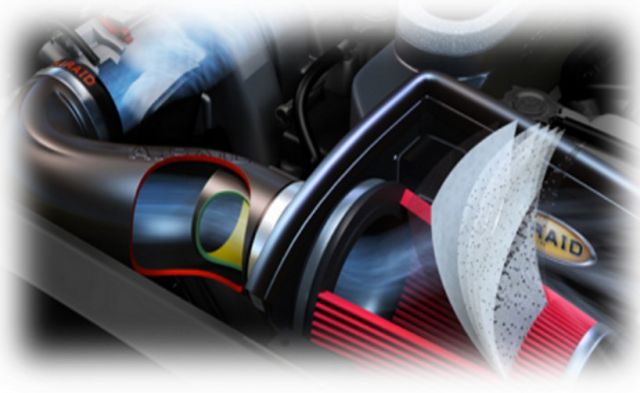
Even before prototypes are created, cold air intake designs are ran through a battery of CAD tests to ensure the smoothest intake flow possible.
Although factory air induction systems work just fine for stock uses, they’re also quite restrictive because Detroit wants you to have a quiet drive. The priorities for a factory design are low noise outside the vehicle, low production expense, and no warranty issues, with performance being a long way down the list. That said, there’s room for improvement via many of the aftermarket cold air induction systems available today. Which system you choose depends largely on personal taste and power expected.
A cold air system is a good first mod for any LS vehicle because short of adding a supercharger or turbo system to a naturally aspirated factory motor that requires reconfiguration of the whole intake, everything else you subsequently do to improve the car’s performance will benefit as well. It’s also a good project for someone who isn’t all that experienced with working on their own vehicles, and it will let you learn some basic mechanics while rewarding you with the satisfaction of getting to know your engine better in the process.
Now, let’s take a look at some of the major players in the LS cold air intake market, and what they have to offer for the vast range of cars, trucks, and SUV’s General Motors has produced with Gen III/IV engines…
AIRAID
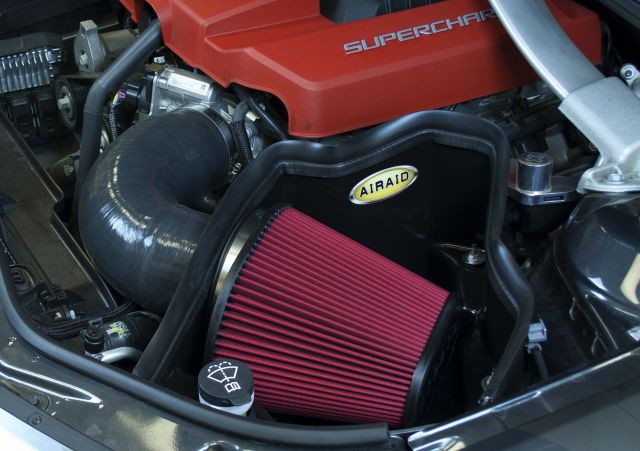
This is the #250-308 cold air system for the Camaro ZL1. Note the massive reuseable filter, the Roto-molded airbox, and the huge intake ducting – all for max air flow.
AIRAID Sample Applications
- 2012 CTS-V 6.2L: 28 HP and 43 TQ Increase with AIRAID #251-253C
- 2005 Corvette, 6.0L: 21.6 HP and 23.2 TQ Increase with AIRAID #250-218
- 2006 Trailblazer SS 6.0L: 18.0 HP and 26.0 TQ Increase with AIRAID #200-206-1
- 2010 Camaro SS 6.2L: 16 HP and 13 TQ Increase with AIRAID #251-243
These folks don’t need much of an introduction with the LS crowd because they’re been committed to GM’s new generation flagship V8 since the beginning. “AIRAID offers cold air systems for all popular LSX based applications,” Trent McGee from AIRAID, tells us. “We are continually trying to improve the way our products fit and perform. Our in-house engineering team consists of both mechanical and industrial design engineers using the latest 3-D CAD modeling equipment to produce advanced designs that make power right out of the box.” And this is exactly what you want from a bolt-on cold air system.
A typical AIRAID Intake system consists of a large Roto-molded airbox and oversized intake duct along with a huge washable, reusable air filter available using either oiled or non-oiled filtration technology. AIRAID Intake systems also utilize the OEM mounting points for a quick and easy installation that does not require any cutting or drilling. The beauty of this approach is its OEM demeanor with minimal restriction.
K&N Cold Air Systems
If it is impossible for you to imagine the aftermarket speed equipment world without K&N Engineering, that’s because this forward-thinking aftermarket company has been around for more than 40 years. K&N Engineering started as a small family run business in Riverside, California founded to produce reusable cotton gauze air filters that offered improve breathing above and beyond that of paper element and oil bath air filters. In 1992, K&N produced its first air intake system, which led to many more.
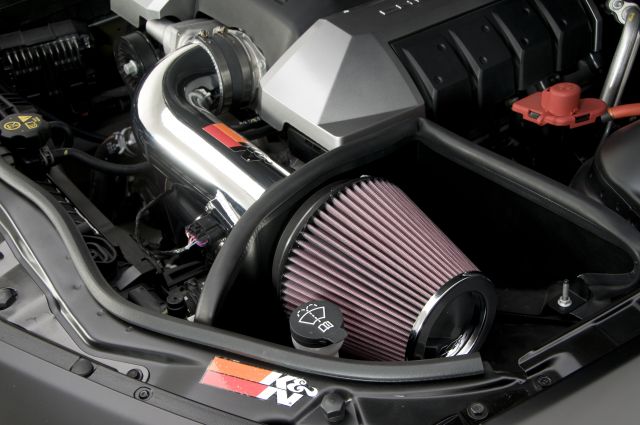
K&N has been manufacturing cold air induction systems for 20 years, and today K&N’s High-Flow cold air systems go through a rigorous testing program before they are approved for sale to the public. What’s more, most of these systems are smog legal.
K&N Sample Applications
- 2004 Silverado 2500 6.0L: 20.34 HP and 21.83 TQ Increase with K&N #57-3031-1
- 2010 Corvette 6.2L: 17.72 HP and 19.59 TQ Increase with K&N #63-3073
- 1998 Camaro Z28: 14.73 HP and 14.59 TQ Increase with K&N #57-3022-2
- 2012 Camaro SS 6.2L: 18.62 HP and 18.95 TQ Increase with K&N #63-3074
“All of our intakes are developed on one of three dyno labs we have in house. Once we make the horsepower we’re happy with we then take the vehicle on a 60 mile road trip to make sure all the factory settings are not affected by the prototype K&N intake,” Bert Heck, K&N Intake Manager, tells us. “If everything checks out, we then bring in two or three more vehicles to verify the horsepower gains and that the factory settings did not get affected on these new vehicles. The intake is then released.”
We asked Heck what kind of power gains could be expected from a K&N High-Flow cold air kit, and he replied very practically, saying, “That’s a tough question to answer because each vehicle platform makes different power, though they may have the same LS engine. We have seen is everything from 10 horsepower all the way up to 20 plus horsepower gains, which is very impressive from a cold air kit.”
One area of pride for K&N is their aforementioned commitment to testing and proof when it comes to power. Heck adds, “In today’s marketplace there are some pretty big cold air intake power claims. We don’t make claims – we present the facts, backed up by well documented tests.”
K&N rigorously tests every design before it makes its way to the marketplace. Not only do they test for flow and added power, but they also test for filtration efficiency, proving their systems keep intake air just as clean as factory air filters, if not cleaner.
Vararam Industries
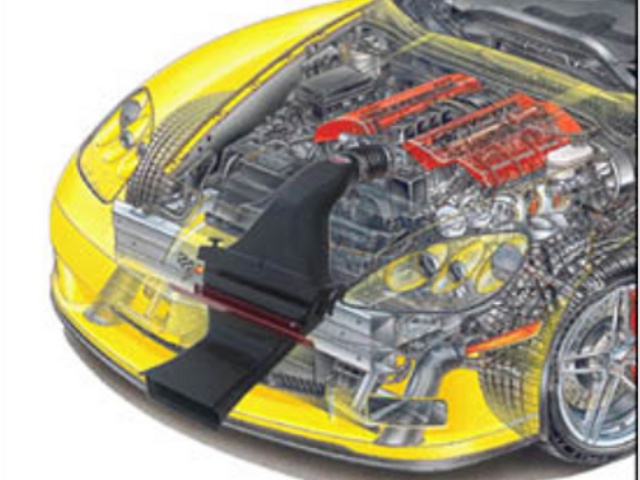
Check out the VR-SC1R Snake Charmer for the C6 Z06 Corvettes. The system is designed to provide maximum gains without tuning or special programmers.
Vararam Industries was founded to help performance enthusiasts enjoy the benefits of racing technology in their street cars and has been very successful at doing just that. “Our air induction systems produce more horsepower and torque, offering you more real world performance,” Patrick Ledford of Vararam tells us. “We use the latest in aerodynamic technology and real world testing to produce our intake components. Most Vararam systems take up to a year to develop. We use a very tedious testing process of evaluating a particular application’s true restrictions and reducing them to zero; we then try to force feed the engine or tune the system to a particular application.”
Grueling R&D Time
Vararam Sample Applications
- 2008 Corvette Z06 7.0L: 35 HP and 35 TQ Increase with Vararam #VR-SC1R
- 2009 Pontiac G8 6.0L: 35 HP and 35 TQ Increase with Vararam #VR-Ram-Air-V
- 2010 Camaro SS 6.2L: 20 HP and 22 TQ Increase with Vararam #VR-SS No Tune
- 2007 Silverado 1500 5.3L: 25 HP and 25 TQ Increase with Vararam #VR-Tri-Power
Just a quick cruise through Vararam’s website makes it clear they employ very high levels of research and development. Vararam’s systems are mostly focused on creating a “ram air” effect when the vehicle is moving down the road in a real world driving situation. Of course, their horsepower and torque claims are also backed by real world testing as well.
One good example is the VR-SC1R Snake Charmer for the C6 Z06 Corvettes. Vararam designed a front scoop with a raised floor to decrease plenum volume, which will increase the air velocity as it heads to the filter. Then the inlet venturi are raised 1/4-inch and the flange area has been increased for large cubic inch engines.
“Extensive research and development has led to a product that has proven itself to be one of the most powerful ram air system on the market for the Z06 Corvette,” Ledford tells us. “Imagine, 1/4 mile improvements of 3.5 tenths and 3.5 MPH all with no tuning. Simply plug and play. We’ve also noted improvements in fuel mileage with the VR-SC1R.”
Chevy/GMC/Caddy Truck/SUV Power
If you’re a 2007-up truck/SUV owner with LS power, you will like the new Vararam Tri-Power ram-air system for Chevy and GMC. The great appeal is how it is designed and engineered because it requires no drilling or cutting. It affords you true ram-air right out front at the leading edge of your truck’s slipstream. Vararam claims 25-30 horsepower increases are possible, without concern for water ingestion.
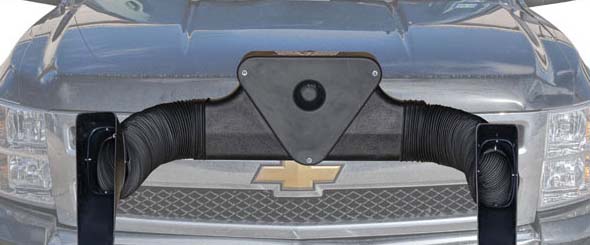
Vararam’s Tri-Power ram-air system for LS powered trucks and SUVs may yield as much as 20-30 horsepower depending upon your application and state of tune. The Tri-Power design is a great example of just how much variance there can be in design from one company to the next.
What Have We Learned Today?
While horsepower is never free, a good, well-designed cold air intake system is a relatively inexpensive, DIY-friendly upgrade that can provide extra performance when chosen correctly. Picking the right one for your LS-powered vehicle comes down to research – look at the information the company provides, ask questions on your favorite forum, and make an informed decision. The time you spend will be well-rewarded down the line, no matter where your automotive path takes you.


























